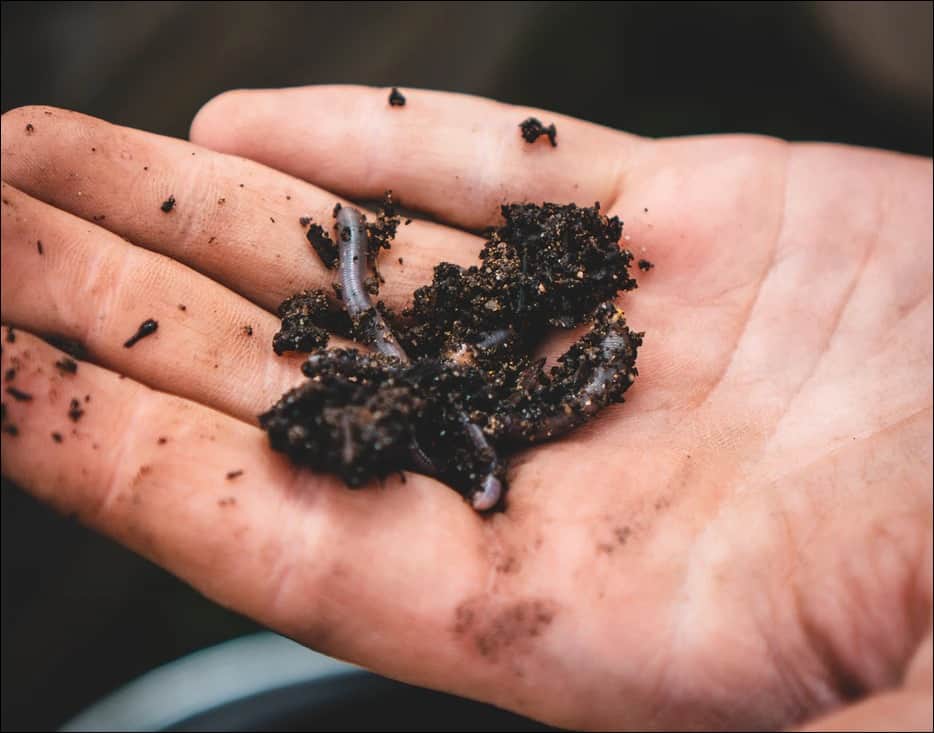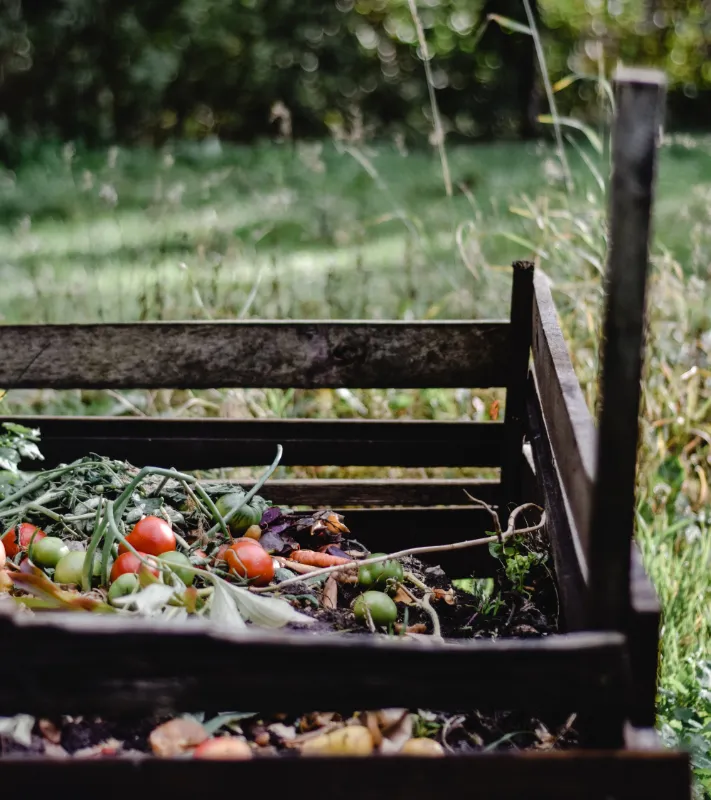
Vermicomposting is a type of composting that uses worms to break down organic matter and create nutrient-rich compost. One of the benefits of vermicomposting is that it allows you to compost a wide variety of materials, including fruit. However, not all fruits are suitable for vermicomposting, and it is important to carefully consider which fruits you add to your vermicompost to ensure that the worms have a healthy and balanced diet. In this article, we will explore some of the fruits that can be added to a vermicompost, as well as some tips for adding fruit to your vermicompost to ensure that it breaks down properly and provides the maximum benefit to the worms and your plants.
Fruit can be added to a vermicompost, such as banana peels (high in nitrogen), apple cores/peels, mango pits, melon rinds, orange peels, pineapple tops, and strawberry tops. Balance the amount and variety of fruit to ensure worms have a healthy diet. Too much fruit can make the compost too acidic.
Fruit can be a valuable addition to a vermicompost, providing worms with a source of nutrients and helping to break down other organic matter. Some types of fruit that can be added to a vermicompost include banana peels, mango pits, melon rinds, orange peels, pineapple tops, and strawberry tops. When adding fruit to a vermicompost, it is important to consider the size and texture of the fruit, as well as the balance of different types of fruit. Fruits that are large or hard, such as coconut shells or mango pits, may take longer to break down and may be more difficult for the worms to consume. It is generally recommended to chop or shred these types of fruit to make them easier for the worms to break down. Additionally, it is important to avoid adding too much fruit to the compost pile, as this can cause the compost to become too acidic, which can be harmful to the worms.

What fruits can you add to your vermicompost?
There are many types of fruit that can be added to a vermicompost, including banana peels, mango pits, melon rinds, orange peels, pineapple tops, and strawberry tops. These fruits are generally soft and easy for worms to break down, and they are also high in nutrients that can be beneficial to the worms and the plants in your garden.
When adding fruit to a vermicompost, it is important to consider the size and texture of the fruit. Fruits that are large or hard, such as coconut shells or mango pits, may take longer to break down and may be more difficult for the worms to consume. It is generally recommended to chop or shred these types of fruit to make them easier for the worms to break down.
It is also important to consider the balance of different types of fruit in your vermicompost. Adding too much fruit can cause the compost pile to become too acidic, which can be harmful to the worms. It is generally recommended to add a mix of high-nitrogen and low-nitrogen fruits to a vermicompost to ensure that the worms have access to a range of nutrients.
In addition to the types of fruit that can be added to a vermicompost, there are also some types of fruit that should be avoided. For example, you should avoid adding citrus fruits, such as lemons, limes, and oranges, to a vermicompost. These fruits are acidic and can cause the compost pile to become too acidic, which can be harmful to the worms.
You should also avoid adding fruits that are high in oils or fats, such as avocado pits or coconut shells. These types of fruits can be difficult for the worms to break down and may attract pests, such as flies or rodents.
💡 Did you know we have a complete guide on vermicomposting?
How to prepare fruit for composting
Preparing fruit for composting is an important step to ensure that the compost breaks down properly and provides the maximum benefit to your plants and soil. There are several things to consider when preparing fruit for composting, including the size and texture of the fruit, the nutrient content of the fruit, and the balance of different types of fruit in the compost pile.
One of the most important things to consider when preparing fruit for composting is the size and texture of the fruit. Fruits that are large or hard, such as coconut shells or mango pits, may take longer to break down and may be more difficult for the worms to consume. It is generally recommended to chop or shred these types of fruit to make them easier for the worms to break down.
In addition to the size and texture of the fruit, it is also important to consider the nutrient content of the fruit. Some types of fruit, such as banana peels and mango pits, are high in nitrogen, which is an essential nutrient for plants. Adding these types of fruit to a compost pile can help to improve the fertility of the soil and promote the growth of plants. On the other hand, fruits that are low in nitrogen, such as apples and pears, may not provide as much benefit to the compost pile.
Another thing to consider when preparing fruit for composting is the balance of different types of fruit in the compost pile. Adding too much fruit can cause the compost pile to become too acidic, which can be harmful to the worms. It is generally recommended to add a mix of high-nitrogen and low-nitrogen fruits to a compost pile to ensure that the worms have access to a range of nutrients.
10 high-nitrogen fruits and 10 low-nitrogen fruits to add to your vermicompost
High-nitrogen fruits
- Banana peels
- Mango pits
- Melon rinds
- Pineapple tops
- Strawberry tops
- Kiwi peels
- Papaya seeds
- Persimmon seeds
- Tomato stems and leaves
- Watermelon rinds
Low-nitrogen fruits
- Apple cores and peels
- Blueberry tops
- Cherry pits
- Grapefruit peels
- Lemon peels
- Orange peels
- Peach pits
- Pear cores and peels
- Raspberry tops
- Strawberry tops
💡 There are some foods worms can’t eat. Read more about it here.

What benefits are there for adding fruits to your vermicompost?
There are several benefits to adding fruit to a vermicompost:
- Nutrient content: Many types of fruit, such as banana peels and mango pits, are high in nitrogen, which is an essential nutrient for plants. Adding these types of fruit to a vermicompost can help to improve the fertility of the soil and promote the growth of plants.
- Decomposition: Fruits that are soft and easy to break down, such as banana peels and strawberry tops, can help to speed up the decomposition process in a vermicompost. This can help to create a nutrient-rich compost more quickly.
- Pest control: Adding fruit to a vermicompost can help to attract beneficial insects, such as lacewings and ladybugs, which can help to control pests in your garden.
- Soil structure: Vermicomposting helps to improve the structure of soil by adding organic matter and increasing the number of beneficial microbes in the soil. Adding fruit to a vermicompost can help to further improve the structure of the soil.
- Water retention: Vermicomposting can help to improve the water retention of soil, which is especially important in dry climates. Adding fruit to a vermicompost can further improve the water retention of the soil.
Common problems with adding fruit to a compost pile
There are several common problems that can occur when adding fruit to a compost pile:
- Pest attraction: Fruits that are high in oils or fats, such as avocado pits or coconut shells, can attract pests, such as flies or rodents, to the compost pile. This can be a problem if the pests spread disease or damage the compost pile.
- Odor: Some types of fruit, such as citrus fruits or bananas, can produce a strong odor when they decompose. This can be a problem if the compost pile is located near your home or other areas where the odor may be unpleasant.
- Acidity: Adding too much fruit to a compost pile can cause the compost to become too acidic, which can be harmful to the worms and other microorganisms in the compost. This can slow down the decomposition process and reduce the quality of the compost.
- Nutrient imbalance: Adding too much of any one type of fruit to a compost pile can cause the compost to become unbalanced in terms of nutrients. This can be a problem if the worms and other microorganisms do not have access to a range of nutrients, as this can slow down the decomposition process and reduce the quality of the compost.
- Size and texture: Fruits that are large or hard, such as coconut shells or mango pits, may take longer to break down and may be more difficult for the worms to consume. This can slow down the decomposition process and reduce the quality of the compost.
To avoid these problems, it is important to carefully consider the types and amounts of fruit that you add to a compost pile. Avoid adding large or hard fruits, and be sure to balance the amount and variety of fruit to ensure that the worms and other microorganisms have a healthy and balanced diet. It is also important to monitor.

What fruits does worms prefer?
Worms prefer soft, easy-to-digest fruits, such as banana peels, mango pits, and strawberry tops. These types of fruit are high in nutrients and are easy for worms to break down, which makes them a valuable addition to a vermicompost.
Worms generally do not prefer fruits that are large or hard, such as coconut shells or mango pits, as these can be more difficult for them to break down and consume. Fruits that are high in oils or fats, such as avocado pits or coconut shells, may also be less preferred by worms, as they can be more difficult to digest and may attract pests, such as flies or rodents.
In addition to considering the size and texture of the fruit, it is also important to consider the balance of different types of fruit in the vermicompost. Adding too much of any one type of fruit can cause the compost to become unbalanced in terms of nutrients, which can be harmful to the worms. It is generally recommended to add a mix of high-nitrogen and low-nitrogen fruits to a vermicompost to ensure that the worms have access to a range of nutrients.
Overall, worms generally prefer soft, easy-to-digest fruits that are high in nutrients and are easy to break down. By carefully considering the size and texture of the fruit, as well as the balance of different types of fruit, you can create a healthy and balanced vermicompost that is beneficial to the worms and your plants.
In conclusion
Vermicomposting is a type of composting that uses worms to break down organic matter and create nutrient-rich compost. Adding fruit to a vermicompost can provide worms with a source of nutrients and help to break down other organic matter. Soft, easy-to-digest fruits, such as banana peels, mango pits, and strawberry tops, are preferred by worms. It is important to consider the size and texture of the fruit when adding it to a vermicompost and to balance the amount and variety of fruit to ensure worms have a healthy diet. Too much fruit can make the compost too acidic. Citrus fruits, such as lemons, limes, and oranges, and fruits high in oils or fats, such as avocado pits or coconut shells, should be avoided in a vermicompost. Fruits should be prepared for composting by chopping or shredding them and removing any seeds or pits. Adding fruit to a vermicompost can provide numerous benefits, including improving the fertility of the soil, attracting beneficial insects, and improving the structure and water retention of the soil.
